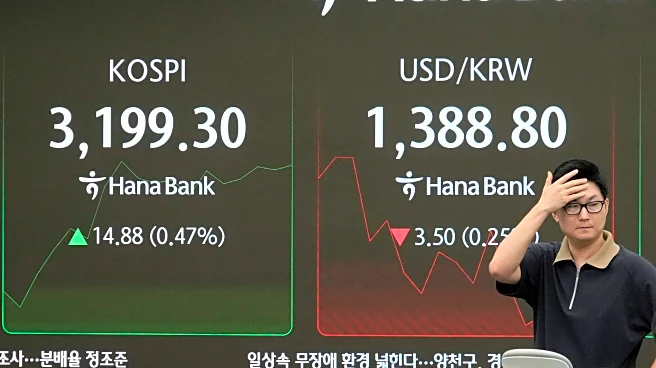What's Happening?
The Indian government has announced a reduction in the goods and services tax (GST) on various items, aiming to boost domestic consumption and mitigate the impact of U.S. tariffs. The GST has been simplified to a two-rate structure of 5% and 18%, with additional taxes on luxury goods. This move is expected to enhance consumer spending and corporate profits, potentially increasing household spending power by up to 0.8% of GDP. The tax cuts coincide with high tariffs on Indian exports to the U.S., including textiles and seafood, which are expected to be significantly affected.
Why It's Important?
The tax cuts are strategically timed to counteract the economic impact of U.S. tariffs on Indian exports. By boosting domestic consumption, the Indian government aims to cushion the economy against potential downturns in export revenue. This approach could serve as a model for other countries facing similar trade challenges, highlighting the importance of domestic market strength in global economic strategies. The move also reflects India's efforts to simplify its tax system, which has been criticized for its complexity.
What's Next?
The effectiveness of these tax cuts will depend on their implementation and the extent to which they are passed on to consumers. Monitoring inflation rates and consumer spending will be crucial in assessing the success of this policy. Additionally, the Indian government may need to explore further economic measures if U.S. tariffs continue to impact key export sectors.
Beyond the Headlines
The tax cuts highlight the broader geopolitical and economic challenges faced by countries in navigating trade relationships with major economies like the U.S. The situation underscores the need for diversified economic strategies that balance export reliance with strong domestic markets.













